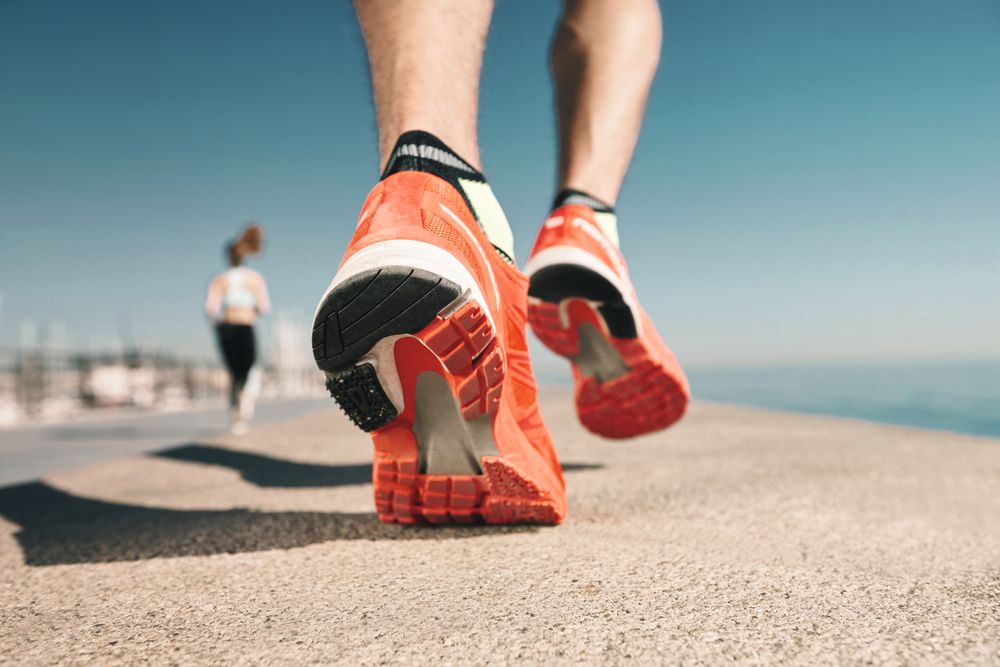Calcaneal orthotic inserts refer to a type of plantar support/shoe insert that aims to stimulate the foot as a stabilising and propulsive organ, leading to better body balance and posture. They are different than usual calcaneal inserts, which serve more as a means of redistributing plantar loads.
Dynamic plantar orthotics were developed by Nancy Hylton for patients with motor deficiencies. These orthotics adapt well in this perspective and constitute a complement to the Bobath concept, aiming to stimulate the neuromuscular tone.
Historically, this dynamic concept of plantar support was developed to promote better use of the foot in children affected by neuromotor disorders through better transfer of loads in stance and gait by regulating lower extremity muscle tone. These orthotics have proven particularly efficient in cases of discovery or recovery of good dynamic balance.
These orthotic inserts have been used by occupational therapists to aid children with hypotonia or other neurological disorders that prohibit the correct core stabilisation in stance or gait. Progressively, they have also been used in orthopaedics to improve postural perception and correct malposition of the upper body while walking or running. With improved proprioceptive information, better control of movement and balance are achieved. The information provided with the aid of these inserts stimulates muscle tone that keeps subtalar and midtalar joints, as well as the fore foot, aligned. Thus, with a solid base, the upper body is also better aligned in the course of movement. The biomechanic principle consists in stimulating the sole of the foot in order to achieve active support of the foot arch and normal gait flow. In this manner, balance and dynamic stabilisation of the body are positively influenced.
Example of dynamic calcaneal orthotics:
A custom-made sole orthotic plate is prepared according to the patient’s foot imprint. With a thickness of just 2mm, it can be inserted and adapted to all kinds of shoes. Specific indentations lead to the lowering of the metatarsal heads, the calcaneus and connective tissue around these structures. Indentations also allow the positioning of triangular components forming a stirrup, which aid the transfer of proprioceptive information regarding the position of the foot.
The patient’s foot imprint is traced by the occupational therapist following a strict protocol based on the patient’s posture. On that imprint, specific anatomical points of reference are noted.

The occupational therapist observes:
- the cutaneous aspect of the patient’s bare lower extremities while standing (global aspect, support area, asymmetry)
- gait pattern (heel positioning, adjustment activity, hip-shoulder dissociation, length of step etc.)
Analysed through the trained eyes of the occupational therapist, all the above points will allow for the adjustment of the calcaneal stirrup so as to provide the most dynamic support corresponding to the patient’s needs and physical aptitude.
The calcaneal stirrup allows improved stabilisation of the foot, ankle and knee and through better control of hind foot position even improved overall balance. The stirrup holds the calcaneus in a controlled position and in that manner the patient can strengthen the core balance without muscular and tendinous hyperextensions. Through appropriate distribution of loads under the bottom of the foot and a corrected alignment, a new muscular and tendinous balance can be built. The stirrup has the advantage of providing sensory stimuli repeatedly throughout the day.
The occupational therapist will replace the stirrup to accommodate the patient’s experience of the fit, as well as wear through time. The first pair of stirrups is always made of a low-density material.
The big difference between plantar orthotics of “stirrup” type and plantar support type (made by orthopedic technicians) is the following: occupational therapists always start with orthotics made of supple materials that don’t aim to support the foot, but to provide it with sensory proprioceptive information which will optimise its function. Plantar orthotics made by orthopaedic technicians have a purely supportive function.
Plantar support orthotics (and/or plantar/orthopaedic insoles) are made by orthopedic technicians or chiropodists SSP after static and dynamic pressure measurements (at the moment only for specific cases, but in the future as the norm). They are produced specifically for each patient through computer-aided fabrication, thermoforming or by hand.
Their role is to:
- maintain, support and stabilise the foot in a better static position and in relation to body dynamic
- correct and/or compensate for a reversible defective static position of the foot or plantar anomaly.
In conclusion, traditional plantar support orthotics made by orthopedic technicians function by supporting the foot, using data from pressure measurements. Calcaneal orthotics of “stirrup” type made by occupational therapists function as sensory information mediums and are constructed using measurements acquired by a foot imprint that reflect the anatomy of the patient’s foot. Occupational therapists always follow medical prescription.
 EN
EN  DE
DE  ES
ES  FR
FR 